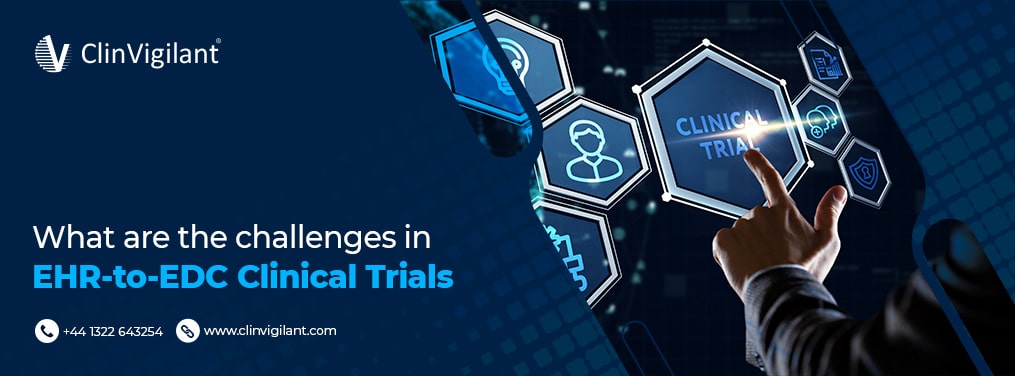
The combination of technology and study has changed how clinical studies are done in the fast-paced world of healthcare today. Electronic Data Capture in Clinical Trials tools have become a game-changer that has changed how data is collected, managed, and analyzed in clinical studies. At the same time, Electronic Health Records (EHRs) have become an important part of modern healthcare settings. EHRs make it easy for healthcare workers to share information about patients. Integrating electronic health records (EHRs) with electronic data capture in clinical trials has a lot of promise to improve the research process and help medical progress. But this integration has a few problems that need creative solutions and cross-departmental cooperation before this powerful mix can be used to its full potential.
Understanding the Electronic Data Capture in Clinical Trials
Electronic Data Capture (EDC) collects, organizes, and saves clinical study data online in clinical studies. In the past, clinical studies relied on paper-based documentation, which posed challenges and increased the likelihood of errors. However, the introduction of EDC In Clinical Trial systems has revolutionized data collection by enabling online recording, real-time analysis, and enhanced data quality. This advancement not only streamlines processes but also ensures patient safety. EDC Clinical Trials has changed clinical research by making it easier to collect data, speeding up data entry and question resolution, and making study schedules more efficient.
How EDC is Changing Clinical Research
EDC in clinical research increased because it is better than standard paper-based data collection in many ways. EDC Clinical Trial systems have two important benefits. First, they save time by expediting data entry and response to inquiries, resulting in quicker completion of trials. Second, these methods ensure standardized data, promoting uniformity across multiple locations and studies. EDC Clinical Trials also helps improve the quality of data in clinical research by putting in place reliability checks and having real-time data tracking, which lets problems be found early.
The Importance of Electronic Health Records (EHRs)
Electronic Health Records (EHRs) are computer versions of a patient’s medical background. They include detailed information about their health, medical treatments, medicines, and more. EHRs have become a vital component of modern healthcare setups. They facilitate seamless information sharing among doctors and nurses, thereby enhancing patient care and coordination. The wide adoption of Electronic Health Records (EHRs) has yielded numerous benefits: enhanced patient care, improved healthcare organization, and a reduction in medical errors. Moreover, when EHRs are integrated with EDC in clinical research, researchers gain access to vast amounts of patient data stored within the EHRs. This wealth of information can greatly contribute to the effectiveness.
Challenges in EHR-to-EDC Integration
- Data compatibility and interoperability: They pose significant challenges when integrating EHRs with EDC Clinical Trials systems. The complexity of EHR data forms often hinders direct compatibility with EDC systems, necessitating careful efforts in data transfer and standardization. Closing this gap requires effective collaboration and communication among EHR companies, clinical research organizations, and EDC solution providers.
- Data Privacy and Security: Maintaining the privacy and security of data holds great significance due to the sharing of sensitive patient information by EHRs and EDC systems. When exchanging data, clinical studies must adhere to stringent regulations like the Health Insurance Portability and Accountability Act (HIPAA) that safeguard patient privacy.
- EHR Systems Difference: Hospitals and clinics utilize diverse Electronic Health Record (EHR) systems, each characterized by their unique structure and language. Consequently, merging data from different sources into a unified Electronic Data Capture in Clinical Trials system becomes challenging due to these disparities in data format and content.
- Inconsistencies and Quality of Data: EHRs are mostly made for caring for patients, not for study. Because of this, the data in EHRs might not be as accurate or consistent as is needed for clinical study. Getting rid of data errors and ensuring the data is good have become important parts of the integration process. Using advanced methods to clean up and check the quality of the data can make integrated data more accurate.
- Obstacles of a Technical Nature: When integrating complex systems like EHRs and EDC, the collaboration between clinical research teams and IT departments becomes crucial. When it comes to moving data, integrating systems, and keeping everything in sync, technical problems can often arise. To navigate these obstacles successfully, the collaboration between study organizations and IT workers becomes crucial.
Innovative Solutions and Best Practices
- The Data Mapping and Standardization: Implementing a standardized data model and mapping EHR data to match the needs of the EDC system can enhance data compatibility and minimize errors during integration. Utilizing widely accepted standards like CDISC (Clinical Data Interchange Norms Consortium) norms facilitates smoother transmission and receipt of data.
- Interoperable Systems: When developing electronic health record (EHR) and electronic data capture in clinical trial systems, it is beneficial to prioritize interoperability. This approach simplifies data transmission and enhances communication between the two platforms. By emphasizing widely recognized data-sharing standards, the merging processes can proceed seamlessly.
- Data Quality Checks: Data quality checks are essential in maintaining the accuracy and reliability of integrated EHR data. To identify and address issues, data validation and cleaning tools play a crucial role. Regular audits and validations ensure that the combined data is correct and can be trusted.
- Cross-functional collaboration: Cross-functional collaboration plays a key role in the smooth merging process of clinical research, IT teams, and healthcare workers. By working together, they gain insights into each system’s functioning and facilitate better understanding. The integration of EHR and EDC Clinical trials achieves optimal results through regular contact and knowledge sharing.
- Compliance with regulations: Compliance with regulations is crucial when safeguarding patient privacy during data sharing. Following appropriate data security laws, such as HIPAA, holds utmost importance. Establishing strong data control frameworks and Compliance means giving patients and other parties faith that their data is safe and private.
Conclusion
The potential benefits of integrating Electronic Health Records (EHRs) and Electronic Data Capture in clinical trials are significant. This integration has the power to expedite medical research and enhance its accuracy. While challenges related to data compatibility, privacy concerns, and technological issues may arise, collaboration among healthcare professionals, experts, and IT specialists can resolve these obstacles effectively. The future of clinical studies appears promising when novel ideas and technological advancements are embraced. EHR-to-EDC integration simplifies data management and accelerates medical progress, and contributes substantially to improving patient care. As the healthcare industry undergoes continuous transformation, the seamless merging of EHRs and EDC undoubtedly paves the way for breakthroughs that will revolutionize the field.

